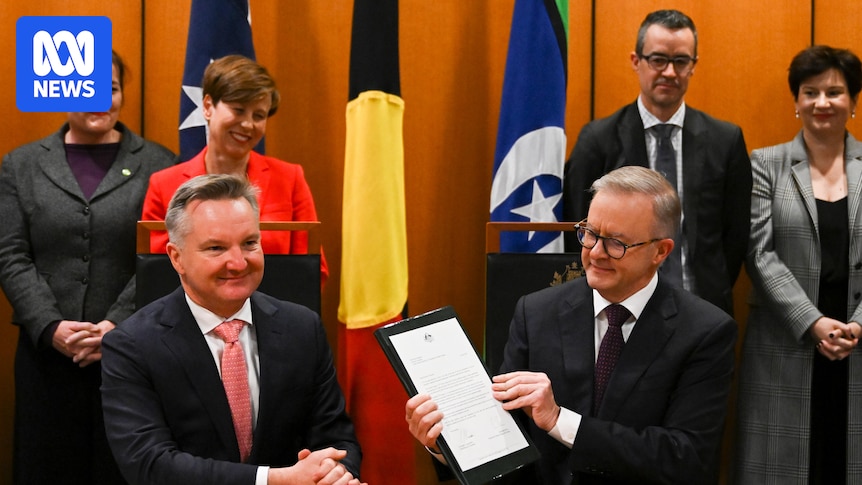
Prime Minister Anthony Albanese and Climate Change Minister Chris Bowen are poised to announce Australia’s 2035 climate target, a commitment that seeks to outpace the ambitions of allies like Canada and New Zealand, yet remains below the United Kingdom’s aggressive benchmarks. This decision, one of the most pivotal in the current Labor government’s term, aims to strike a balance between ambition and feasibility among similarly minded nations.
The announcement is expected to be finalized in a cabinet meeting today before being presented at the United Nations General Assembly in New York next week, where global leaders will converge to confirm their respective 2035 targets. This move follows the recent release of Australia’s first National Climate Risk Assessment, which highlighted the potential impact of rising sea levels on 1.5 million people by 2050, increased heat-related deaths, and frequent flooding in major urban centers if global temperatures rise above 2 degrees Celsius.
Australia’s Unique Approach to Climate Targets
Australia’s federal government prides itself on a distinctive approach to setting climate targets, rooted in a ground-up analysis of policy measures and their projected emissions reductions. The 2030 target, which aimed for a 43 percent reduction in emissions, was based on comprehensive policy modeling. The same methodology is being applied to the 2035 target, incorporating recent initiatives like the $1.1 billion fund for green aviation and diesel fuel production.
This morning, the cabinet is expected to deliberate on recommendations from the Climate Change Authority (CCA), with Mr. Bowen anticipated to propose a final target to his colleagues. Treasurer Jim Chalmers confirmed that his department has modeled a target within the CCA’s consulted range of a 65 to 75 percent reduction. However, the CCA’s final advice, to be released alongside Treasury modeling, may fall short of this range due to geopolitical shifts, including the United States’ retreat from climate action under President Donald Trump.
Global Context and Expert Opinions
The Intergovernmental Panel on Climate Change (IPCC) warned in 2021 that to limit global warming to a 1.5-degree Celsius increase over pre-industrial levels, global emissions must be cut by 68 percent by 2035. Despite this, many countries have yet to submit their 2035 targets, and those that have generally fall short of the IPCC’s recommendation. The Climate Change Authority notes that current global commitments, if met, would still result in a 2.9-degree Celsius warming.
While Australia contributes approximately 1 percent of global emissions, Labor MP Jerome Laxale emphasized the nation’s potential to lead by example in achieving ambitious emissions reductions. “The number or the range to be announced this week is very important. But you know, to me it’s not a ceiling. We need to get to net zero as soon as possible,” Laxale stated.
Domestic Debate and Economic Implications
Domestically, the Coalition continues to reassess its climate policy amidst internal disagreements over maintaining a net zero commitment. The party has cautioned against pursuing emissions reductions “at any cost.” Climate advocacy groups argue that any target below 71 percent would fall short of commitments already made by Australian states and territories, potentially representing a step backward.
According to a 2024 Climateworks report, state and territory targets collectively aim for a 66 to 71 percent reduction in emissions by 2035. Conversely, the Business Council of Australia warns that a target in the 70s or higher could result in hundreds of billions in lost export value. As such, the impending target announcement is anticipated to have profound implications for communities, the economy, and the environment over the coming decade and beyond.
The announcement comes at a critical juncture, as the world grapples with the escalating impacts of climate change. Australia’s decision will not only shape its domestic policy but also influence its standing on the global stage as nations strive to meet the ambitious goals set by international climate agreements.






